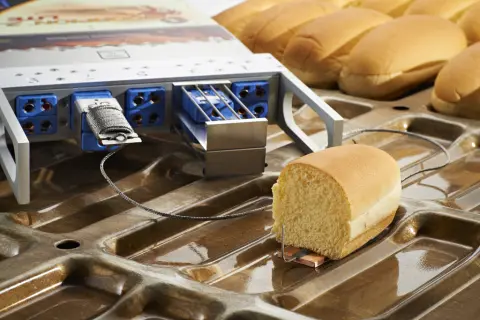Proper temperature and humidity monitoring for commercial bakery ovens in Mexico can help ensure every loaf of bread or bun has a golden, crisp crust. Achieving this result requires a delicate balance between temperature and humidity inside the oven – two variables that can make or break the final product. Reading Thermal products help you precisely measure and control these variables. This leads to baked goods with an ideal bite and beautiful finish every time.
Why Temperature Alone Won’t Deliver the Crust You Want
There’s no denying that heat is essential in crust formation. As oven temperature rises, sugars and amino acids in the dough react, creating that familiar golden surface. However, if heat acts on the dough too quickly, the outer layer can harden before the interior has finished rising. That leads to tight, compressed crumb structures and uneven crusts.
Too much heat in the wrong zone can also cause blistering or burnt patches on the surface. On the other hand, insufficient heat may fail to evaporate moisture from the surface altogether, resulting in pale or rubbery exteriors. Getting the crust just right means more than just cranking up the oven – it means applying heat where and when it matters, guided by data and supported by the behavior of humidity inside the baking chamber.
Humidity’s Silent Influence on Surface Texture
Moisture levels in the oven play a major role in shaping how and when the crust forms. Early in the baking process, humidity helps keep the dough’s outer surface soft and elastic, allowing it to expand as gas escapes from the interior. This flexibility supports oven spring, giving the bread its full volume before the crust begins to set.
As baking continues, the environment must gradually dry out. That moisture release allows the surface of the dough to firm up and brown. If humidity remains too high late in the bake, it prevents moisture from escaping quickly enough, leaving the crust soft and underdeveloped. Conversely, if humidity drops too early, it restricts expansion and hardens the surface before the structure is complete.
Reading Thermal’s SCORPION® 2 Profiling System includes a Digital Humidity Sensor designed specifically to track these shifts throughout the baking cycle. It provides absolute humidity readings in real time, zone by zone, so operators can verify that the right balance exists at each stage. Armed with this data, you can make informed decisions about steam settings, exhaust systems, and airflow adjustments that directly impact the quality of your crust.
Finding the Sweet Spot with Precision Profiling
Perfecting crust development requires more than reactive baking – it takes proactive profiling. By using the SCORPION® 2’s full suite of sensors, including the Heat Flux Sensor and Temperature Sensor Array, bakeries can create detailed thermal maps that show exactly how energy is being delivered to the product. When this data is combined with humidity readings, it paints a full picture of the oven environment.
If your bread crusts are drying out too fast or failing to brown properly, a quick glance at your most recent profile can reveal whether the issue lies in heat delivery, moisture retention, or both. Over time, this data becomes invaluable for standardizing performance across shifts, ovens and product types. You no longer need to rely on visual cues or intuition. Instead, every adjustment is driven by real numbers.
See why so many bakeries turn to Reading Thermal for temperature and humidity monitoring for commercial bakery ovens in Mexico by calling (01) 610-678-5890 or using our online contact form.

